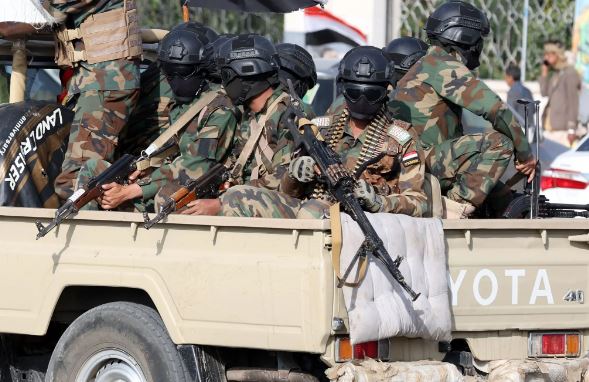The U.S. military launched a significant attack on Wednesday, targeting five underground weapons facilities in areas of Yemen controlled by the Iranian-backed Houthi militia. This operation involved a variety of aircraft, including B-2 stealth bombers, and is seen as a message not only to the Houthis but also to Iran, amidst escalating regional tensions, especially between Israel and Iran.
Defense Secretary Lloyd J. Austin III announced that President Biden had authorized the strikes with the aim of diminishing the Houthis’ ability to attack ships and disrupt maritime commerce in the Red Sea and the Gulf of Aden. Though Austin did not directly mention Iran, the deployment of the B-2 bombers, capable of striking deeply buried nuclear facilities, underscored a broader message of deterrence. The timing of the strike is particularly noteworthy given the current tensions involving Israel and Iran, with concerns that the conflict could spiral into a larger war.
Austin emphasized the U.S.’s strategic military capabilities in his statement: “This was a unique demonstration of the United States’ ability to target facilities that our adversaries seek to keep out of reach, no matter how deeply buried underground, hardened or fortified.” The Pentagon’s decision to use the B-2 Spirit stealth bombers highlighted the importance of these strikes in sending a clear message about U.S. global strike capabilities, ensuring that adversaries, like the Houthis, cannot hide their weapons in fortified or underground locations.
The U.S. Central Command also issued a statement explaining that U.S. Navy forces participated in the mission, which targeted advanced weapons systems used by the Houthis to attack both military and civilian vessels navigating international waters. The Houthis have been involved in attacks on ships as part of their broader alignment with Hamas and their opposition to U.S. and international interests in the region. Since mid-November, U.S. forces have intercepted and neutralized dozens of Houthi attack drones and anti-ship missiles aimed at civilian tankers and cargo ships. This strike is part of a larger effort to degrade the Houthis’ military capabilities and protect global maritime trade routes.
Striking hardened underground targets typically requires specialized munitions, such as bunker buster bombs, designed to penetrate rock, soil, and concrete before detonating. Among these weapons is the GBU-57 Massive Ordnance Penetrator (MOP), a 30,000-pound bomb designed to reach targets as deep as 200 feet underground. Though the Pentagon did not confirm the use of this specific weapon in Wednesday’s attack, the involvement of B-2 bombers suggests that high-powered, precision munitions were likely deployed.
The B-2 bomber is the only aircraft in the U.S. military capable of carrying the MOP, making it a critical asset in targeting deeply buried facilities. The U.S. Air Force is believed to have built only 20 MOP bombs as of 2015, and a few were tested at White Sands Missile Range in New Mexico. These bombs are designed to minimize explosive material in favor of heavier casings, allowing the bombs to survive impact with fortified structures before detonating deep inside.
The U.S. Air Force operates 19 B-2 bombers, all based at Whiteman Air Force Base in Missouri. These bombers are rarely used but have been deployed for key missions in the Pacific and Indian Ocean regions. For this mission in Yemen, the B-2s would have had to fly a long round-trip from Missouri to Yemen, refueling mid-flight, or launched from a base closer to the region. Pentagon spokesman Maj. Gen. Patrick S. Ryder declined to provide details on the bombers’ departure point, citing operational security.
The Houthis, who have been receiving backing from Iran, began targeting civilian shipping vessels in solidarity with Hamas last year. Their use of drones and anti-ship missiles posed a significant threat to international commerce and safety in the region. The U.S. response to these threats, including the strikes on Wednesday, represents a broader campaign to neutralize the Houthis’ advanced weapons capabilities and protect civilian and military interests in international waters.
The use of advanced military technology in this strike, particularly the B-2 stealth bombers, highlights the U.S.’s ability to reach even the most fortified targets. However, the attack also underscores the growing concerns about regional stability, with the potential for further escalation in the conflict between Israel, Iran, and their proxies, including the Houthis.

